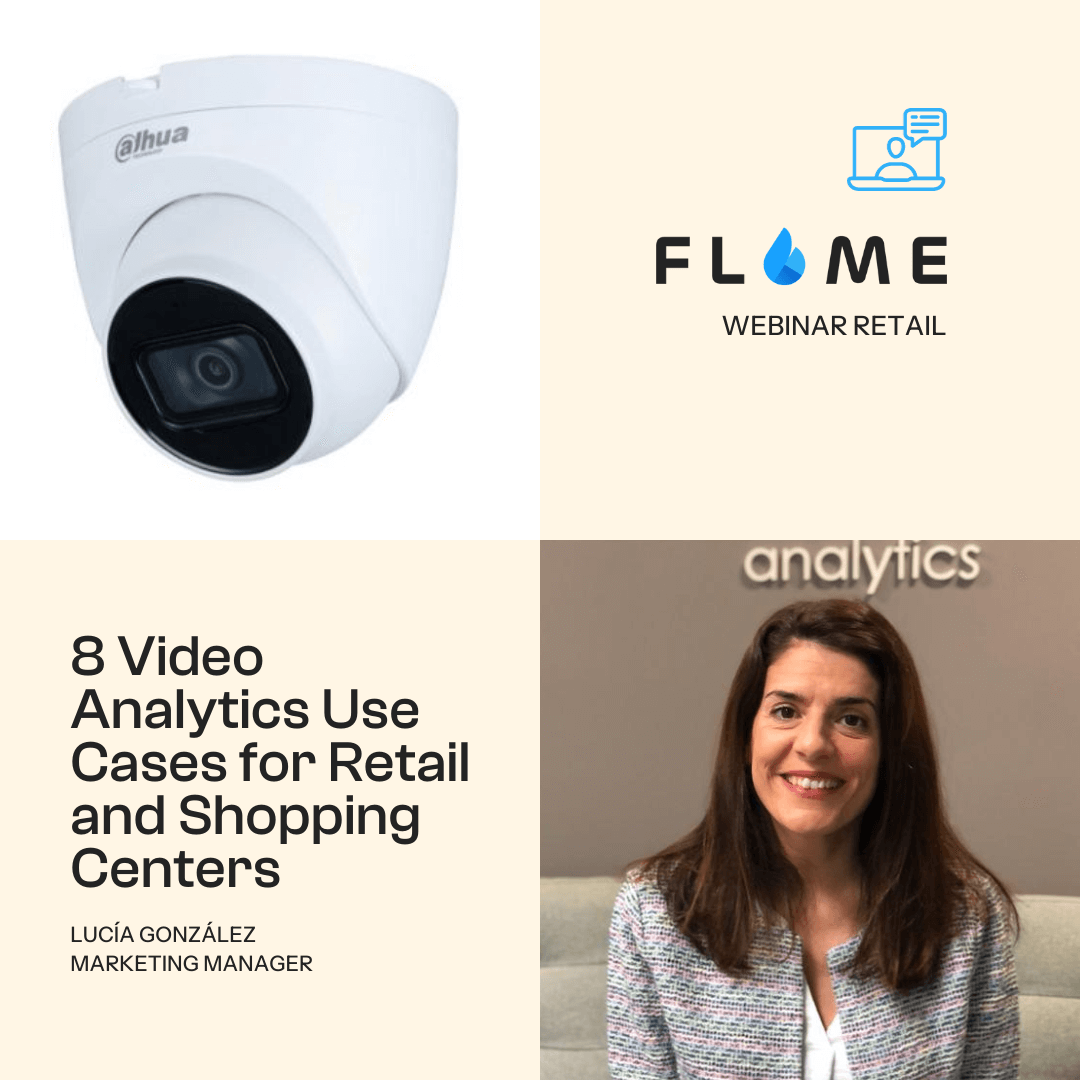Webinar: 7 Video Analytics Use Cases for Retail and Shopping Centers
Retail is advancing by leaps and bounds and, in recent years, has jumped on the innovation bandwagon. There are many technologies that are being designed to improve the customer experience and achieve a smarter Retail. In this webinar we talked about video analytics use cases, a technology that offers valuable information around which to organize market strategies that allows us to personalize the experience of each customer and achieve their loyalty. If you want to know how to take advantage of video analytics in Retail, you are in the right place 🙂 Webinar Summary About Artificial Intelligence We know that Artificial Intelligence has been in our lives for a long time in the form of virtual assistants, natural language processors such as Alexa or Siri, autonomous driving, etc. Incredibly, AI has been with us since the 60s but now is when it is reaching maturity. AI in Retail Thanks to AI in video analytics we can distinguish people in the same way that a human does. This technology analyzes characteristics of the person and is able to classify it, always taking care of privacy. Before, lumps were counted, not people and therefore a person could be confused with another object, something that caused many accuracy problems. In addition to accuracy, with AI the identification of people is completely anonymous, that is, no personal trait is identified. Privacy, both ethically and legally, is very important. Another point to highlight is the speed with which AI is able to identify people, something that allows us to carry out use cases in real time: identification of vehicles, people by demographics, etc. And finally, AI gives us the possibility of doing edge computing, that is, we can run algorithms inside the camera without the need for expensive servers and with a much less expensive maintenance cost. The objective of using AI in retail is mainly to maximize the value of customers at all points of the customer journey, always with a clear orientation to measure the performance of the points of sale. They are solutions focused on generating benefits to the three main departments: operations, marketing and merchandising. Video Analytics use cases 1. Traffic measurement AI allows us to measure with great precision the people who enter the point of sale. AI makes the measurement very accurate by solving for example the problem of loitering (people standing at the door, security personnel, cleaning, etc.) Loitering produces a bias in the count that is solved with this smart technology that no longer counts these people, drastically increasing accuracy. In addition, an automatic monitoring of the data is carried out that allows us to react in an agile way, for example, if a people account stops working. With AI we can launch alerts because it quickly detects any error. The AI is able to capture any anomalous count (a camera has moved and is counting wrong…) It captures it and triggers alerts to carry out support interventions in an agile way. This way we avoid making decisions on erroneous data. AI minimizes errors. Likewise, with AI in Retail we can identify traffic patterns and identify trends. For example: how is the traffic on Mondays or how is it from 5pm to 8pm. It shows us patterns to be able to plan the staff, the opening hours etc. Forecasting helps us predict the future based on data from the past. 2. Occupation One of the most important video analytics use cases is related with occupation. We are talking about capacity measurement or very precise occupancy. A metric that became popular during the pandemic but is here to stay. Measuring occupancy is very important: knowing how full the store is at different times… Very valuable information to know when there are more customers and, for example, make decisions regarding staff. Undoubtedly, a very interesting metric that allows us to manage our staff well and even send alerts in certain cases 3. Traffic by zones With a 360 fisheye camera we can cover an area of about 40-50 square meters, create zones on that surface and measure traffic in them and stay times. We can say that it is like an evolution of heat maps that will allow us to know which are the areas of the store that are most interesting, and where people stay. This will allow us to make decisions in order to improve our marketing, merchandising or operations strategies. Demographic analysis can also be done by zones, dwell time by zones, etc. 4. Customer Journey To know how customers move from one zone to another, that is, the trajectories, the correlation between zones. You can also implement heat maps and draw numbers: how many people who have been in zone A have gone to zone B, etc. 5. Conversion We can measure Passersby, those who enter, those who buy… That is, we can have the complete funnel: How many of those who pass by, go in, how many of those who enter buy… that is: Conversion rates. Even more interesting if we can apply demographic data or by zones. 6. Demographics We can measure conversion by gender and also by zones. 7. Visual Merchandising Oriented to visual and trade marketing departments. It automatically takes high-definition photographs from time to time, sent to Flame so that it can then see the evolution of the stores. Here the AI helps us identify how to take pictures without people, since in this case, they annoy. We only want to see the items on display. We can take advantage of security cameras for this purpose.
